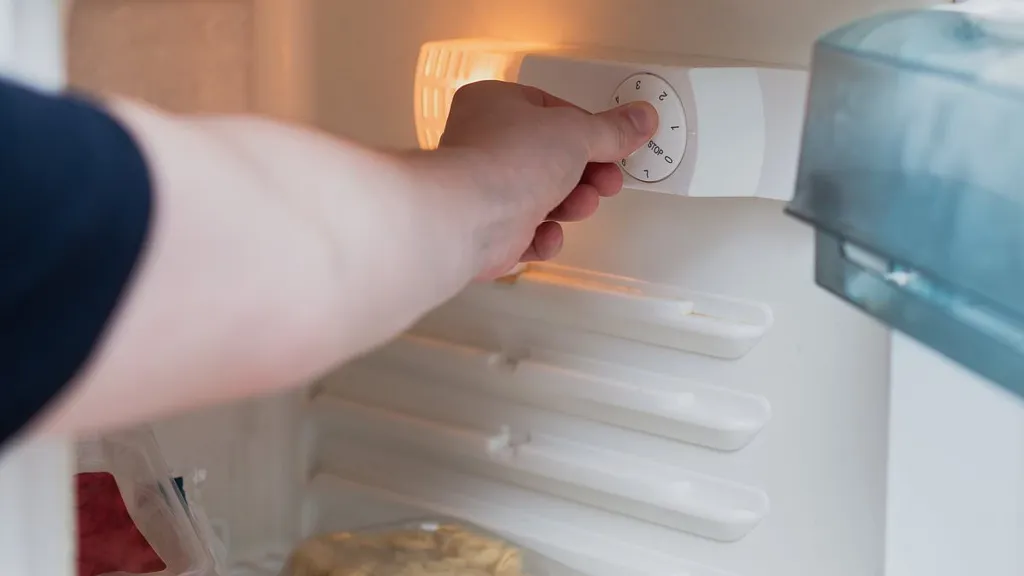It's one of the best parts of the Christmas holidays.
But the government's food watchdog says your plate of leftover Christmas dinner could be putting you and your family at risk of food poisoning.
By storing leftovers at the wrong temperature, many people are letting harmful bacteria tuck into their own Christmas feast creating a potential health hazard.
So, what is the right temperature to set your fridge to this Christmas?
According to the Food Standards Agency (FSA), your fridge needs to be set to at least 5°C (41°F) or lower to store food safely.
The agency warns that you should be checking your fridge's temperature at least once per week using a thermometer.
If your fridge is warmer than you expect, the food could go off faster and become unsafe to eat before you have a chance to enjoy it.
Robin May, Chief Scientific Advisor at the FSA: 'Don't be a turkey - our new data shows us that people are taking some unnecessary and avoidable risks in the way they cook, prepare and store food.'
It might be one of the best parts of Christmas, but the Government's food watchdog has warned that your leftover turkey could put you at risk of food poisoning if you're fridge isn't the right temperature.
According to a survey by the FSA, many Britons are putting themselves in danger of food poisoning during the holidays.
This is especially true when it comes to leftovers since any time spent outside of the fridge allows bacteria to start growing.
The FSA says almost half of Britons are playing 'buffet roulette' by leaving food out of the fridge and eating it a few hours later.
According to the FSA's official guidance, food should only be kept out of the fridge for a maximum of four hours at a time.
So, if you are planning on coming back for seconds, make sure you don't leave it too late before getting the food somewhere cool.
However, when it comes to chilling your food, it's vital to make sure you are doing it properly.
The FSA found that 27 per cent of people are likely to leave food that should be chilled in a cool place like a porch or garage due to a lack of space in the fridge.
Mr May says: 'If you're cooking for a crowd, there's lots to think about and maybe not much room in the fridge.'
According to the Food Standards Agency (FSA), your fridge needs to be set to at least 5°C (41°F) or lower to store food safely. However, your freezer needs to be at least -18°C (-0.4°F) to completely stop the development of germs.
What temperature should your fridge be this Christmas?
| Fridge | 5°C (41°F) to 0°C (32°F) |
|---|---|
| Freezer | -18°C (-0.4°F) or lower |
But while it might things might be crowded, it's important that you properly refrigerate anything you plan on eating later.
Experts have previously suggested that leftovers should be placed at the top of your fridge, leaving the cooler areas at the bottom for fresh food.
A raw turkey, on the other hand, must be stored as low as possible to prevent any juices or contaminants from leaking onto your food.
At the most, the FSA says only to refrigerate leftovers for two days before you eat them.
After that, the build-up of germs could make the food dangerous to consume.
But if you don't have room in the fridge, or in your stomach, the FSA says that you can safely freeze leftovers to eat at a later point.
However, your freezer needs to be at least -18°C (-0.4°F) to completely stop the development of germs.
Likewise, the FSA found that you might be putting yourself at risk of food poisoning even before the dinner is cooked.
Of those who responded, 46 per cent said they didn't always check the use-by dates when preparing food.
A further two-fifths of people said they occasionally cooked meat such as pigs-in-blankets or turkey which is past its use-by date.
TIPS FOR AVOIDING GETTING FOOD POISONING
- Keep a clean work space: Germs can survive across all of the different surfaces in the kitchen, so it's essential to keep the cooking area and your hands clean.
- Avoid cross-contamination: Raw meat, poultry, seafood and eggs can spread germs to ready-to-eat foods if not kept separate. The CDC recommends using separate cutting boards and plates when handling these ingredients. They should also be stored separately in the fridge.
- Use a thermometer: To cook food safely, the internal temperature must get high enough to kill the germs that could cause food poisoning. The correct internal temperature varies by ingredient, and only sure-fire way to tell if food is safely cooked is to use a food thermometer.
- Store food properly: Storing food properly is essential to combating harmful bacteria. Perishable food should be refrigerated within two hours of when it was purchased, and the refrigerator should be set to below 40°F.
- Don't rely solely on expiration dates: Expiration dates aren't the only indication of when a food item should be thrown away. If something seems to have a strange smell or colour, it's probably better to be safe and pitch it.
- Don't thaw frozen food on the counter: Thawing frozen foods on the counter allows bacteria to multiply quickly in the outer parts as they reach room temperature. Frozen foods should be thawed in the refrigerator, in cold water, or in the microwave.
